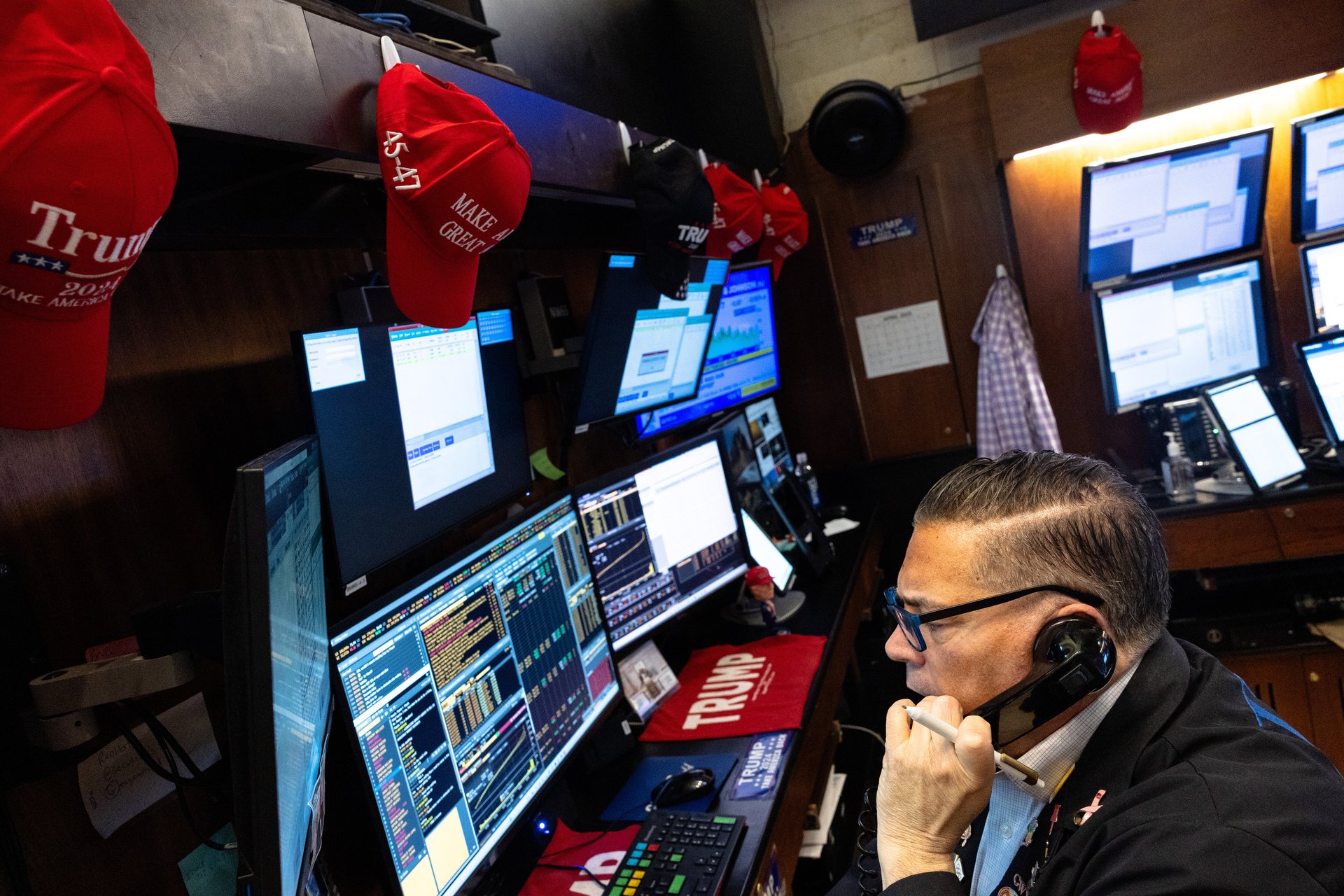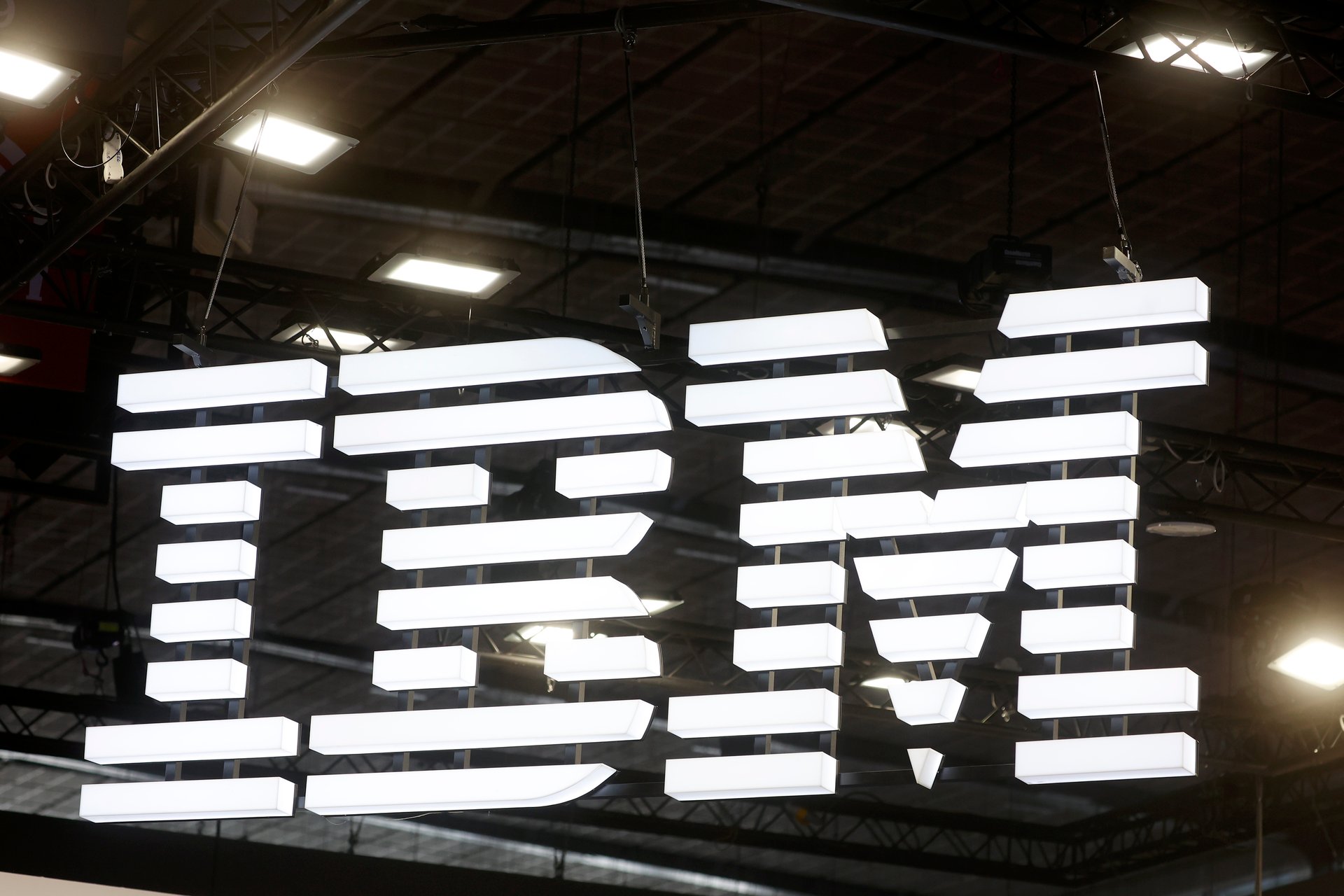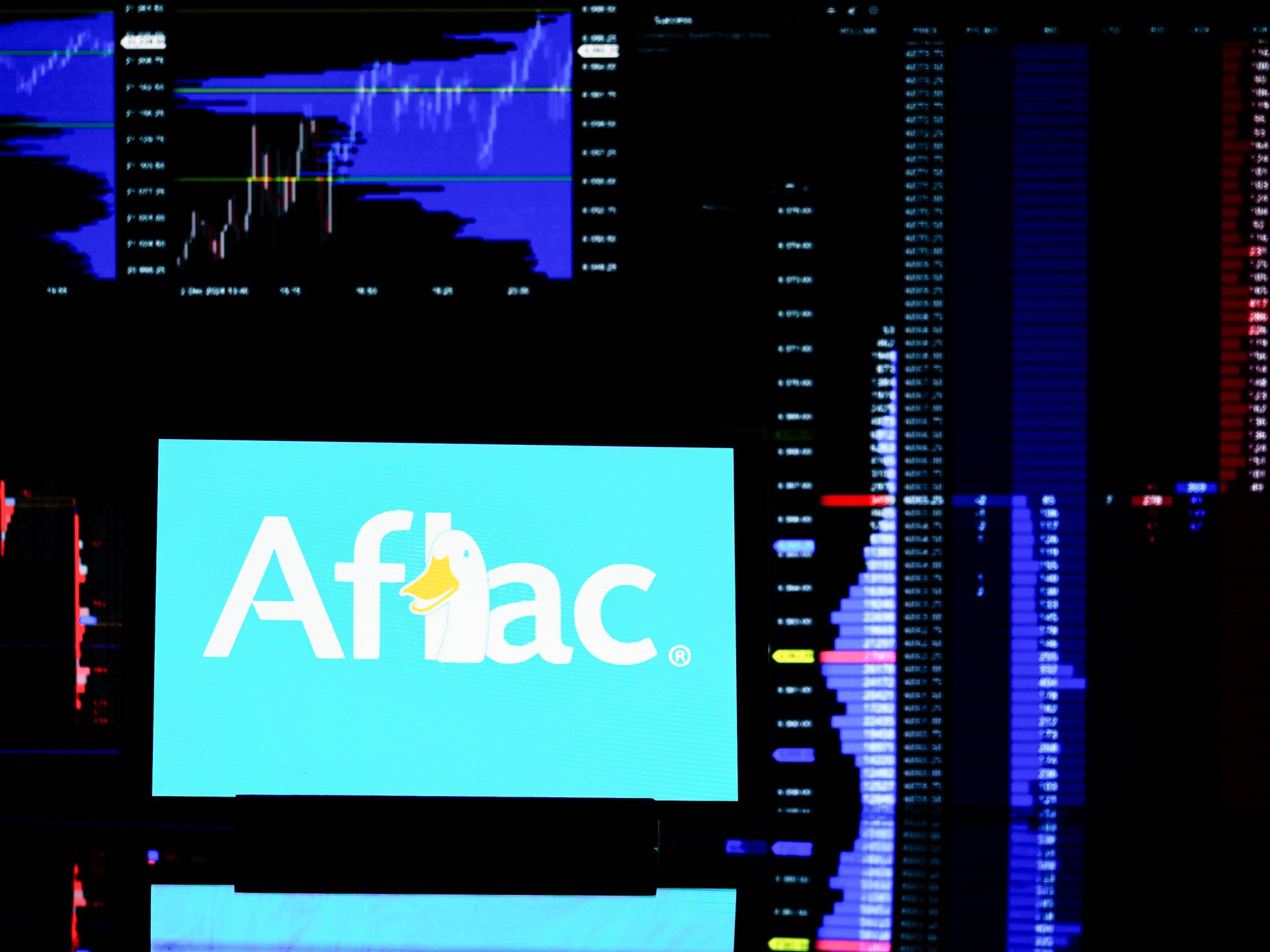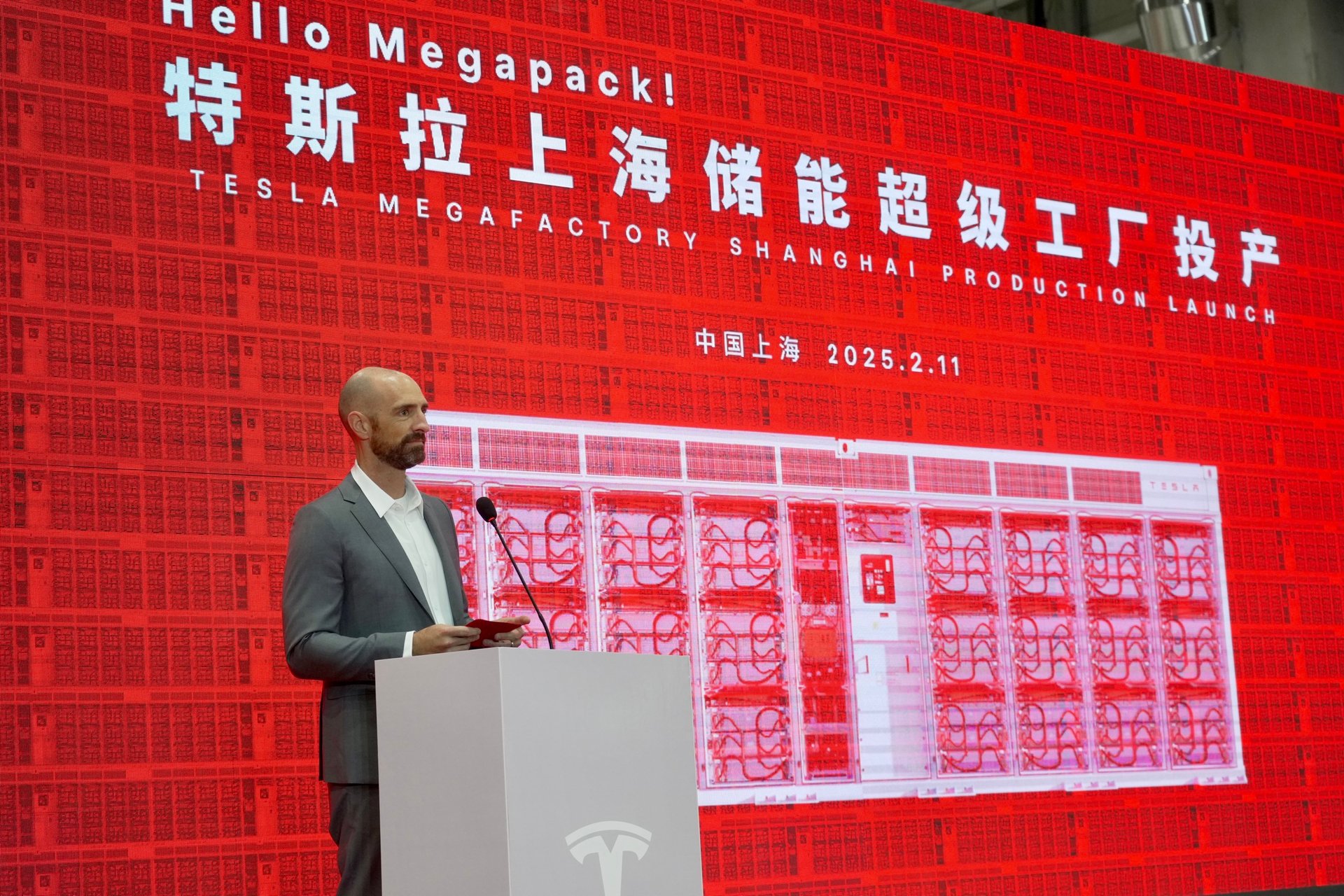
Market closes higher in run-up to Trump's tariff announcement
Investors may be expecting more clarity than pain when the president unveils more import taxes

Investors may be expecting more clarity than pain when the president unveils more import taxes
It’s the end of the world as we know it, but investors seem to feel (mostly) fine, judging by the stock market.
Stocks closed mainly higher on Tuesday ahead of an announcement by Donald Trump on Wednesday in which he may unveil immediate tariffs on almost all U.S. trading partners. The S&P 500 ended 0.4% higher, the Nasdaq Composite gained 0.9%, and the Dow Jones Industrial Average shed 11.8 points.
This muted performance came even as the ISM manufacturing index for March came at 49.0 — below expectations and indicating a contraction — with its forward-looking elements pointing to even deeper pessimism, Goldman Sachs (GS) said. The JOLTS job opening number also fell by more than expected.
Many investors are anticipating that Trump’s press conference will resolve many of the questions surrounding increased import taxes. While markets hate uncertainty, they tend to rally after it’s been resolved, LPL Financial’s (LPLA) strategists wrote in a report.
“There will still be trade policy uncertainty after that date, but the Trump administration is expected to clear up some of the biggest questions investors have right now,” they wrote. “We don’t want to sound too bullish, and we remain cautiously neutral right now, but the opportunity for upside is there.”
But the Trump administration’s track record gives little reason to believe that April 2 will mark the end to ambiguity on trade, Michael Madowitz, the Roosevelt Institute’s principal economist, told Quartz. Even clarity wouldn’t prevent “scary” escalation scenarios — which Trump makes more likely with his confrontational stance.
There’s also the larger question as to whether Trump’s big increases in tariffs are purely a negotiating tactic — a view many investors and observers still seem to hold — or are part of a permanent, ideologically driven shift toward protectionism and away from 80 years of a U.S. push for freer trade.
A major, long-term push to make most U.S. production domestic would take years and involve the deliberate infliction of economic pain, Chris Grisanti, MAI Capital Management’s chief market strategist, told Quartz last month. Costs would jump and stay high for an extended period.
“This is taking on a big structural problem, but the question is whether the cure is worse than the disease,” he said. And with many goods now so complicated, with parts sourced worldwide, seeking to move output 100% onshore would be like “unscrambling eggs.”
Trump’s push away from U.S. foreign policies in place for decades will have long-term economic consequences that may simply be too large for investors to absorb, said Marta Norton, Empower’s chief investment strategist.
“Even if the tariffs are not as severe as painted, it’s still a sea change,” Norton said. “People have a hard time realizing that this a possibility given the state of play for the past couple of decades. It’s so immense that it’s hard to imagine.” However, there’s still a chance the duties will be tactical, she added.

After losing an appeal on a $4.7 billion antitrust charge, the search giant offers up space to its rivals
Google has offered to showcase its rivals in its search results, in a proposal to European regulators, according to a new report. This comes one day after losing an appeal in a European court, and facing a US$4.7-billion antitrust fine for violating the EU’s Digital Markets Act (DMA).
Three months ago, the EU accused Google of favoring its own services like Google Flights and Google Shopping, arguably limiting consumer choice and stifling competition, and accused it of violating the DMA's antitrust regulation.
Reuters, citing documents, reports that Google proposed a vertical search service (VSS) that would feature “objective and non-discriminatory criteria” at the top of its search page, containing links to hotels, airlines, and restaurants. “Other VSS, which are specialized search engines within Google, would be ranked below but without a box unless users click on them,” reported Reuters’ Foo Yun Chee.
The unspoken assumption there is that Google’s current search results are neither objective or non-discriminatory.
The company has been a target on the continent since 2018, when it was fined more than four billion euros for abusing the dominance of its Android operating system. Google has been fined more than eight billion euros since then. President Donald Trump has expressed concerns over the EU’s crackdown on American tech giants, calling it “overseas extortion” and threatening tariffs in response.
"We do not agree with the (Commission's) preliminary findings' position,” said Google in the recent proposal to the EU. “But, on a without prejudice basis, we want to find a workable solution to resolve the present proceedings."
Google’s rivals have a chance to respond to the proposal at a July 8 meeting, while Google is still awaiting a decision in another EU DMA case relating to its digital ad business.
Apple and Meta were fined a combined $800 million in April for violating the DMA. Both are appealing the decision, and on Thursday were not facing sanctions for missing a 60-day deadline to comply with obligations.

Bill Pulte, director of the Federal Housing Finance Agency, demanded Powell's resignation in a Fox Business interview
President Donald Trump's extraordinary offensive against Federal Reserve Chair Jerome Powell is drawing back-up from another administration official.
Bill Pulte, director of the Federal Housing Finance Agency, pushed for Powell's resignation in a Fox Business interview on Friday. It follows an identical string of attacks from Pulte against the central bank chief on social media.
"[Powell] still has interest rates way too high and they're not reflective of the great work that President Trump has done," Pulte said. "Fed Chair Jay Powell either lower the rates or he needs to resign."
Pulte, who oversees housing giants Fannie Mae and Freddie Mac, cited a weak housing market in his case for lower rates. A lower interest rate reduces the cost of a 30-year mortgage.
“As Chairman of Fannie Mae and Freddie Mac, I can tell you that Jay Powell is hurting the housing market by being Too Late to lower rates. He needs to resign, effective immediately,” Pulte said in a Wednesday post on X.
Pulte's attacks align him with Trump's escalating attacks on the Fed, the independent central bank tasked with setting interest rates. The Fed left benchmark interest rates unchanged on Wednesday for the fourth meeting in a row. That development triggered intense backlash from Trump, who mused about installing himself as Fed chair. The President also called Powell "a stupid person" the same day.
Other hardline conservatives such as Sens. Rick Scott of Florida and Tommy Tuberville of Alabama have also called for Powell to resign.
It's unclear whether Pulte, a former private equity executive, secured a green light from the White House to wage a Trump-like offensive against the Fed. The White House and the FHFA did not respond to a request for comment. A spokesperson for the Federal Reserve declined to comment.
William English, a former top Federal Reserve official who is now a finance professor at Yale University, called it "pretty unusual" for administration official to publicly lambast the Federal Reserve. It might not be unprecedented, however.
English added even the appointment of a Trump-friendly Fed chair may not be enough to secure lower interest rates. Powell's term concludes in May 2026, and many of the 12 voting members of the Federal Open Market Committee will remain in their posts.
"The folks voting on policy next spring will be mostly the same as those who voted to keep policy unchanged this week," he said. "So even a Chair wanting easier policy to satisfy the President may well find it hard to deliver."
Other observers echoed concerns about the Fed being able to safeguard its political independence. "It is absolutely nothing new for a president to be critical of what a Fed chair is doing," Claudia Sahm, chief economist at New Century Advisors and a former Federal Reserve economist said. "But typically, those criticisms are behind closed doors."

Wedbush analysts raised their price target for IBM stock from $300 per share to $325, calling the company "one of our top software names to own"
IBM might not be the first company that comes to mind when you hear “AI powerhouse.” But in 2025, Big Blue is busy showing it might just be the most underrated player in the AI arms race.
A new research note from Wedbush Securities is the latest vote of confidence. Wedbush analysts raised their price target for IBM stock from $300 per share to $325, calling the company “one of our top software names to own” and “still under owned.” IBM is one of the 30 companies in Wedbush analyst Dan Ives’ recently launched ETF that tracks AI stocks.
Despite a strong run this year — IBM stock is up about 28% so far in 2025 — Wedbush says the company is in the “early stages of a renaissance of growth,” powered largely by its $6 billion (and growing) generative AI business.
The bullish case hinges on what IBM has quietly built: an AI platform that’s already threaded through more than 70 enterprise workflows, from sales and finance to marketing and IT. Its flagship WatsonX platform, originally launched as a reimagining of the Watson AI brand, has evolved into a serious contender in the generative AI platform wars. IBM is at the forefront of quantum computing. And thanks to its hybrid cloud muscle (see: Red Hat and OpenShift), IBM is well-positioned to meet enterprise clients where they are, especially as analysts expect three-quarters of AI applications to run on containers by 2027.
“Built on a scalable and open foundation, IBM can continuously innovate at rapid pace while leveraging the developer community to capitalize on the current opportunity ahead across both hybrid cloud and AI,” Wedbush analysts led by Ives wrote in their note Friday.
That hybrid strategy is core to IBM’s thesis.
While Microsoft and Google battle it out over copilots and consumer hype, IBM is embedding AI into the nuts and bolts of enterprise software. According to Wedbush’s field checks, demand for IBM’s AI agents and developer tools is strong and accelerating. Clients are looking not just to experiment, but to operationalize AI at scale — and they’re turning to IBM to help map out those use cases.
Meanwhile, the company isn’t taking its foot off the gas.
IBM continues to integrate recent acquisitions such as HashiCorp to strengthen its developer ecosystem, and it’s placing long-term bets in frontier tech. The company recently unveiled its roadmap for “Quantum Starling,” a large-scale, fault-tolerant quantum computer that is expected by 2030. A chip, dubbed Quantum Nighthawk, is due later this year and promises meaningful gains in connectivity and fidelity — critical for real-world quantum applications.
“While still in the early stages of playing out," Wedbush analysts wrote, "IBM is taking this multi-billion-dollar quantum computing industry head-on by providing improved software and hardware capabilities to create increased use cases for various sectors.”
IBM chief executive Arvind Krishna’s long game appears to be positioning IBM not just as a consumer-facing AI brand, but as the backbone for the next generation of enterprise infrastructure. That’s not as flashy as chatbot demos or viral product launches — but it might be more lucrative.
The company is also bucking broader macro trends. While many tech firms have seen enterprise spending slow or shift amid budget pressures, IBM told investors that it hasn’t seen a pullback in customer appetite across its portfolio. Instead, the company says clients are leaning in — investing more deeply in cloud and AI as strategic priorities rather than line-item expenses.
If IBM’s momentum holds, the company could finally be entering the “growth company” phase it’s been chasing for over a decade. The AI boom may have many winners, but Big Blue’s steady, platform-centric approach has made it one to watch — especially if a $325 stock price target becomes less of a ceiling and more of a floor.

Attack is consistent with Scattered Spider, although no ransomware was involved and the breach was dealt with within hours
Health insurance giant Aflac revealed that it had been the victim of a cybersecurity breach on Friday, but that it had been dealt with within hours.
It’s the latest in a series of hacks targeting the insurance industry, following cyberattacks earlier this week on Erie Insurance, which suffered a weeklong outage, and Philadelphia Insurance Companies, also downed for days.
Aflac, which bills itself as the “No. 1 provider of supplemental health insurance products” in the U.S., has approximately 50 million customers. The company said that it was too early to tell how many users were affected in the breach.
Earlier this week, the Google Threat Assessment Group warned that “multiple intrusions in the U.S.” bear the marks of Scattered Spider, a ransomware group that targeted Marks & Spencer and other retailers, and is most famous for hacking Las Vegas casinos in September 2023.
Chief Google analyst John Hultquist told The Register, an enterprise technology news outlet, that the cybercrime group usually focuses on one sector at a time, and that “the insurance industry should be on high alert, especially for social engineering schemes, which target their help desks and call centers." Social engineering is when a hacker poses as a tech-support worker to acquire security information.
Aflac said social engineering caused their hack, although the breach did not involve ransomware, and they did not name Scattered Spider in their statement, instead referring to “a sophisticated cybercrime group.”
The largest breach in U.S. healthcare history happened in February 2024, to Change Healthcare, which affected more than million users, according to the Department of Health and Health Services. Stolen data in any such incident include not just medical records, but credit card numbers, Social Security Numbers, driver’s licenses, and more.
Aflac reassured its customers that the problem had been dealt with by cyber-incident response protocols, and that customer service would not be affected.

Investors will be watching the aftermath of the U.S. attack on Iran, Powell's testimony, an inflation gauge, and earnings from FedEx, Micron, and more
The Federal Reserve last week held interest rates steady and signaled two possible cuts by the end of the year, — though consensus looked to be narrowing, with more hawkish sentiment settling in. Kroger stock surged 10% after raising its full-year forecast, citing strength in pharmacy, eCommerce, and fresh food. The grocer also emphasized gains from its private-label strategy, though executives noted the broader macroeconomic environment remains uncertain.
Meanwhile, geopolitical tensions are only getting higher as the Israel-Iran war drags into a second week, with the U.S. joining the fray Saturday with attacks on Iran's nuclear facilities.
This week, investors will be watching Federal Reserve Chair Jerome Powell's congressional testimony, the PCE inflation gauge , and earnings from FedEx, Micron, Nike, Walgreens, and more.
Here's what to watch this week.
Monday brings S&P Global's flash PMIs for June, offering early insight into how manufacturing and services are holding up under relatively high interest rates. New home sales for May will shed light on whether housing demand is stabilizing amid the same trends, including relatively high mortgage rates. On the corporate side, earnings reports will trickle out from a small handful of companies, including FactSet, Commercial Metals, and KB Homes.
Tuesday will see Powell deliver semi-annual congressional testimony. It will also bring the release of the Conference Board’s June confidence index, widely expected to reflect ongoing unease around inflation and trade policy. The S&P/Case-Shiller home price index for April will offer a backward-looking snapshot of residential housing, and on the earnings front, results from FedEx and Carnival should offer insights into global shipping demand amid the trade wars and travel appetite among middle-income Americans.
On Wednesday, new home sales data for May will shed light on buyer demand and inventory conditions. Wednesday also brings some fresh data on trends in business investment with the release of May’s durable goods orders, an important indicator of corporate spending on equipment and infrastructure.
Earnings from Micron Technology will provide insight into semiconductor demand and the pace of the AI data-center boom. Expect results from Paychex, General Mills, Winnebago, and Levi Strauss & Co, too.
Thursday brings a dense lineup of economic indicators, headlined by the final estimate of first-quarter GDP. The second estimate already showed a 0.2% contraction, and any revision could cement concerns that the economy stumbled more than expected early in the year.
May’s durable goods orders will offer a window into trends in business investments, while the Chicago Fed’s national activity index gauges broad economic momentum. Additional reports on the goods trade balance, wholesale inventories, and pending home sales will help flesh out the picture. Weekly jobless claims will also be in focus as analysts watch for any cracks in the labor market.
On the corporate side, Nike and Walgreens will report earnings, providing insight into shoe, shampoo, and pharma demand.
Friday ends the week with the release of the core PCE price index for May, the Fed’s preferred inflation gauge and a key input for future rate decisions. Personal income and spending data will show whether consumers are fueling growth or pulling back. Also on tap is the University of Michigan’s final read on consumer sentiment for June.

Amid a tense U.S.-China relationship, Tesla has agreed to a $557 million deal for a project that will reportedly be the largest of its kind
While the rest of the world focuses on Tesla’s robotaxis and Cybertrucks, Elon Musk is quietly building a power play — literally.
On Thursday, Tesla signed a roughly $557 million agreement with the Shanghai government to build its first large-scale energy storage station in China, marking a significant expansion of the company’s growing energy business. The facility will deploy Tesla’s Megapack batteries — giant lithium-ion units the size of shipping containers — to help stabilize China’s increasingly renewable-heavy power grid. Tesla said on Chinese social media service Weibo that the site will be the largest of its kind in China when it’s up and running.
The announcement isn’t just a regional milestone. The deal could be a glimpse into Tesla’s long-term future as an energy infrastructure company, not just an automaker.
The battery storage station will be co-located with Tesla’s Megafactory in Shanghai’s Lingang district, which began mass production of Megapacks earlier this year. Once complete, the facility will offer industrial-scale backup power to local energy providers — effectively acting like a giant battery bank that can charge during periods of low demand and discharge when the grid is under strain.
Each Megapack is capable of delivering up to one megawatt of power for four hours, enough to power hundreds of homes during peak demand. In bulk, they form the backbone of Tesla’s utility-scale energy solutions, which are already deployed in places such as California, Australia, and the U.K. But this Shanghai facility signals a major leap: integrating Megapacks directly into the fabric of one of the world’s largest power grids.
On Chinese social media platform Weibo, Tesla described the grid-side energy storage station as a “smart regulator” for urban electricity, capable of flexibly adjusting grid resources in real time to meet shifting demand — a particularly valuable asset as cities scale up intermittent power sources such as solar and wind. While the translation came via Google, the message was clear: Tesla isn’t just selling batteries; it’s positioning itself as an infrastructure player, helping future-proof megacities with intelligent energy systems.
This role — as a kind of software-defined shock absorber for the grid — could become Tesla’s most durable advantage in global energy markets. And in China, where grid modernization is both a national priority and a policy-supported opportunity, it gives Musk’s company a powerful foothold. The Shanghai battery power plant would “effectively solve the pressure of urban power supply and ensure the safe, stable, and efficient electricity demand of the city,” the company said.
The deal couldn’t come at a better time for China. The country is doubling down on wind and solar power, but these sources are inherently intermittent. Energy storage — particularly grid-scale — is increasingly critical to ensuring stable power delivery across sprawling provinces.
In Tesla’s first-quarter 2025 earnings report, the company said its energy storage deployments soared to 10.4 GWh, more than doubling year-over-year and setting a company record. Energy revenue jumped 67% to $2.73 billion, while gross profit hit an all-time high — making the energy division one of the few bright spots in an otherwise rocky quarter. The energy unit continues to outpace Tesla’s automotive business in margin performance, fueling some speculation that the company’s future may lie less on wheels and more on the grid.
During Tesla’s fiscal 2025 first-quarter earnings call, Musk said that “the energy business is doing very well,” adding that its growth would be long-term and substantial — expecting it to “eventually deploy terawatts of capacity per year.” In 2024, Musk said the energy storage business could someday outsize the car business: “It will increase — we actually know that it will — significantly faster than the car business, as we expected,” he said.
That may no longer be hypothetical.
The Shanghai deal isn’t just about deploying batteries. It’s about Tesla embedding itself deeper into the energy grid of the world’s largest clean power market. It also sets a precedent for similar infrastructure partnerships in Europe and the U.S., where grid modernization is also top of mind.
While Wall Street continues to watch Tesla’s vehicle deliveries and AI ambitions, the company’s batteries may be what keeps the lights on — both literally and figuratively.

Pavel Durov says Telegram will become a nonprofit foundation to ensure its independence and freedom of speech
Telegram CEO Pavel Durov has fathered more than 100 children, to whom he will leave his multi-billion-dollar fortune, he told the French magazine Le Point on Thursday.
The 40-year-old CEO said he only wrote his will recently, in which none of his children will receive any of his money until 30 years from now. “I want them to live like normal people, to build themselves up alone, to learn to trust themselves, to be able to create, not to be dependent on a bank account,” he said.
He has six children with three different partners, and more than 100 via sperm donation, in 12 countries. He says the will does not discern between any of them.
“They are all my children and will all have the same rights," he told the outlet. "I don't want them to tear each other apart after my death.”
Amid widespread concern about the inequality gap, Durov has chosen a rather personal form of wealth redistribution.
In a Telegram post last year, Durov said he first donated sperm 15 years ago to help a friend conceive. The head of the clinic told him he was “high-quality donor material” and told him it was his “civic duty to donate more sperm to anonymously help more couples.” Durov says he will “open-source my DNA so that my biological children can find each other more easily.”
His succession plan for Telegram is that it will become a non-profit foundation. “My goal is to ensure the platform's continuity,” he said. “I want it to continue existing independently, respectfully of privacy and freedom of expression."
Durov first made his fortune in 2013, when he sold his stake in the Russian equivalent of Facebook, VKontakte, and invested much of the proceeds in Bitcoin. He started Telegram that year with $200 million.
The Bloomberg Billionaires Index estimates his net worth at $13.9 billion, but Durov says he doesn’t draw a salary or dividends from his company. “Telegram is a source of expenses, not revenue,” he told Le Point, adding that he is the sole shareholder. A failed blockchain project, which was banned by the SEC, put the company in $2 billion of debt.
Telegram now has more than one billion monthly active users. It helped pioneer high-encryption messaging, beloved by privacy activists, but also popular with criminals. In 2024, Durov, an outspoken free-speech champion, was arrested in France on charges that Telegram was facilitating a variety of crimes, including child pornography, drug trafficking, and money laundering. “Just because criminals use our messaging service among many others doesn’t make those who run it criminals,” he told Le Point.

Federal Reserve Governor Christopher Waller argued for a July interest rate cut since he doesn't expect a tariff-induced inflation spike to linger
A top Federal Reserve official said Friday he believes the central bank should move ahead with an interest rate cut next month.
"I think we’re in the position that we could do this as early as July,” Federal Reserve Governor Christopher Waller said in a CNBC interview. “That would be my view, whether the committee would go along with it or not.”
Waller added he doesn't expect inflation that might stem from tariffs will reach a significant level or linger for a prolonged period.
"I don’t think we need to wait much longer, because even if the tariffs come in later, the impacts are still the same," Waller said. "It should be a one-off level effect and not cause persistent inflation.”
The Federal Reserve held interest rates steady after officials wrapped up a two-day meeting on Wednesday. The move left the benchmark rate at its current range of 4.25% to 4.50%.
"The unemployment rate remains low, and labor market conditions remain solid. Inflation remains somewhat elevated," the Fed statement said. It was the fourth meeting in a row in which Fed officials decided to sit tight and not change interest rates in either direction. They still signaled that two rate cuts were on deck for 2025.
President Donald Trump has not let up in his pressure campaign to prod the Federal Reserve to lower interest rates. On Wednesday, he said nothing he's done has successfully persuaded the central bank to lower interest rates.
"Now we have a man that just refuses to lower the Fed rate, just refuses to do it," he said, referring to Fed Chair Jerome Powell. "He's not a smart person. I don't even think he's that political. I think he hates me, but that's okay."

Virtual reality is poised to transform the battlefield, as defense contractors race to put mixed reality headsets on soldiers’ heads
A version of this article originally appeared in Quartz’s members-only Weekend Brief newsletter. Quartz members get access to exclusive newsletters and more. Sign up here.
After years of searching for mainstream adoption beyond gaming and entertainment, virtual reality has finally found its killer app — literally. The technology that once promised to revolutionize everything from shopping to socializing is now poised to transform the battlefield, as defense contractors race to put mixed reality headsets on soldiers’ heads.
While companies such as Meta have poured billions into building the metaverse for civilian use, it’s military applications that are driving real investment and deployment at scale. The transformation is embodied by the unlikely reunion between Meta and Palmer Luckey, the VR pioneer who was fired from Facebook in 2017 after selling it Oculus, the startup he co-founded, for $2 billion. Now, through his defense company Anduril Industries, Luckey has become the military’s VR gatekeeper — and Meta needs his help to enter the lucrative defense market.
The partnership announced last month between Meta and Anduril to develop “EagleEye” extended reality devices for the U.S. Army represents more than just a business deal. It’s a homecoming that expands Luckey’s technological options to include Oculus hardware that he wants to use to turn soldiers into what he calls “technomancers.”
“This move has been so many years in the making, over a decade of hacking and scheming and dreaming and building with exactly this specific outcome clearly visualized in my mind’s eye,” Luckey wrote on his blog. “I can hardly believe I managed to pull it off.”
Since founding Anduril in 2017 after his Facebook exit, Luckey has been methodically building toward this moment. He assembled a team largely from Palantir, the secretive data analytics firm that serves intelligence agencies and military clients, secured more than $1 billion in defense contracts, and positioned the company as a disruptor to traditional defense giants like Boeing and Lockheed Martin.
The EagleEye system will carry sensors that enhance soldiers’ hearing and vision, able to detect drones flying miles away or spotting hidden targets. More significantly, it is supposed to allow soldiers to operate AI-powered weapon systems, creating a seamless interface between human decision-making and semi-autonomous military technology.
This collaboration stems from the Army’s $22 billion Integrated Visual Augmentation System program, originally awarded to Microsoft but transferred to Anduril in February after Microsoft failed to deliver a functional headset.
The Meta-Anduril partnership reflects Silicon Valley’s broader evolution toward defense work — and a striking reversal of fortune for Luckey. He was fired from Facebook in 2017 after donating to a group opposing Hillary Clinton, triggering an internal campaign to oust him for his conservative politics.
Now those same political views have become a strategic advantage. The Trump administration is pushing for a trillion-dollar Pentagon budget and urging the military to adopt commercial technology from venture-backed startups and tech companies rather than traditional defense contractors. Luckey’s early support for Donald Trump and his defense advocacy position him perfectly for this moment.
Meta has recruited former Pentagon staff and opened its AI models for military applications, while Anduril has secured partnerships with OpenAI, Oracle, and Palantir. The company’s valuation has skyrocketed to $30.5 billion.
The military’s VR adoption is driven by practical necessities that don’t exist in consumer markets. Traditional military training is expensive and time-consuming, often requiring significant resources and posing safety risks. VR training can be deployed anywhere, repeated endlessly, and modified instantly to address new threats.
Building VR for warfare presents unique challenges far beyond consumer applications: Combat headsets must withstand extreme conditions while providing crystal-clear intelligence in life-or-death situations. The interfaces must work intuitively under immense stress, resist enemy hacking attempts, and integrate seamlessly with existing military systems.
The Army isn’t new to VR, but much of its current deployment focuses on everyday training situations where the consequences are serious but not immediately lethal. At Fort Liberty, North Carolina, the 82nd Airborne Division uses VR headsets to train soldiers on sexual harassment intervention, transporting troops into realistic scenarios where they must practice speaking up.
The realism proves crucial for building what Army leadership calls “courage muscles.” In suicide prevention training, soldiers enter a virtual room where a distressed fellow soldier surrounded by empty bottles reveals feelings of hopelessness. Participants describe physically feeling the stress, forcing them to practice intervention techniques in a safe but realistic environment.
“This is an opportunity to improve scenario-based training with realism,” Sergeant Major of the Army Michael Weimer told GovTech. “When that moment pops up that’s real, it’s less awkward.”
As warfare becomes increasingly digital, VR may have finally found more than just its defining purpose. The technology that promised to change how we work and play is instead changing how we fight — and in doing so, may finally live up to its transformative potential, for better or worse. The outcome will largely depend on who controls this technology — and Luckey has signaled he’s just getting started.
“Whatever you are imagining, however crazy you imagine I am, multiply it by ten and then do it again,” Luckey said in his blog. “ I am back, and I am only getting started.”